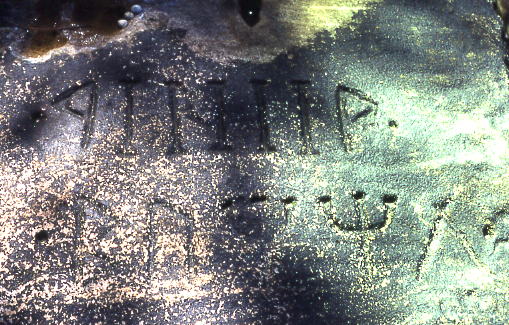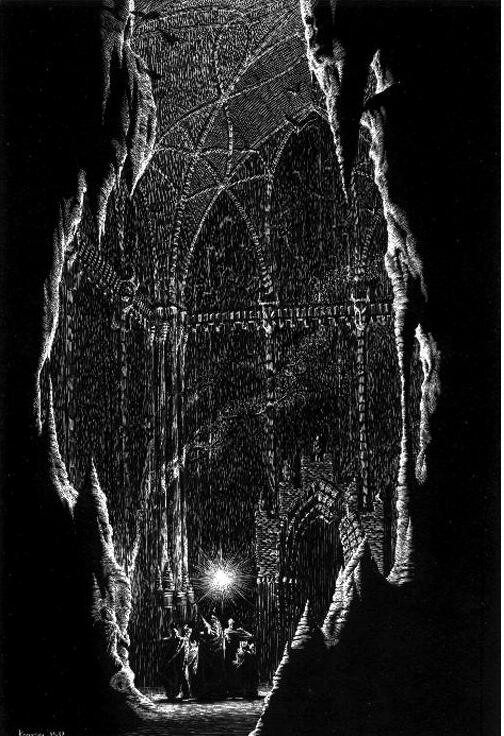|
Khuzdul
Khuzdul () is a fictional language created by J. R. R. Tolkien, one of the languages of Middle-earth, specifically the secret and private language of the Dwarves. He based its structure and phonology on Semitic languages, primarily Hebrew, with triconsonantal roots of words. Very little is known of the grammar. External history Tolkien began developing Khuzdul before the publication in 1936 of ''The Hobbit'', with some names appearing in the early versions of ''The Silmarillion''. Tolkien based Khuzdul on Semitic languages, primarily Hebrew, featuring triconsonantal roots and similarities to Hebrew's phonology and morphology. Tolkien noted some similarities between Dwarves and Jews: both were "at once natives and aliens in their habitations, speaking the languages of the country, but with an accent due to their own private tongue…". Tolkien commented of the Dwarves that "their words are Semitic obviously, constructed to be Semitic." Although a very limited vocabulary ... [...More Info...] [...Related Items...] OR: [Wikipedia] [Google] [Baidu] |
Dwarves In Middle-earth
In the Tolkien's legendarium, fantasy of J. R. R. Tolkien, the Dwarves are a race inhabiting Middle-earth, the central continent of Arda (Middle-earth), Arda in an imagined mythological past. They are based on the Dwarf (mythology), dwarfs of Germanic myths who were small humanoids that lived in mountains, practising mining, metallurgy, blacksmithing and jewellery. Tolkien described them as tough, warlike, and lovers of stone and craftsmanship. The origins of Tolkien's Dwarves can be traced to Norse mythology; Tolkien also mentioned a connection with Jewish history and language. Dwarves appear in his books ''The Hobbit'' (1937), ''The Lord of the Rings'' (1954–55), and the posthumously published ''The Silmarillion'' (1977), ''Unfinished Tales'' (1980), and ''The History of Middle-earth'' series (1983–96), the last three edited by his son Christopher Tolkien. Characteristics The medievalist Charles Moseley (writer), Charles Moseley described the dwarves of Tolkien's leg ... [...More Info...] [...Related Items...] OR: [Wikipedia] [Google] [Baidu] |
Cirth
The Cirth (, meaning "runes"; sg. certh ) is a semi‑artificial script, based on real‑life runic alphabets, one of Tolkien's scripts, several scripts invented by J. R. R. Tolkien for the constructed languages he devised and used in his works. ''Cirth'' is written with a capital letter when referring to the writing system; the letters themselves can be called ''cirth''. In the fictional history of Middle-earth, the original ''Certhas'' was created by the Sindar (or Grey Elves) for their language, Sindarin. Its extension and elaboration was known as the ''Angerthas Daeron'', as it was attributed to the Sinda Daeron, despite the fact that it was most probably arranged by the Noldor in order to represent the sounds of other languages like Quenya and Telerin. Although it was later largely replaced by the Tengwar, the Cirth was nonetheless adopted by the Dwarf (Middle-earth), Dwarves to write down both their Khuzdul language (''Angerthas Moria'') and the languages of Man (Middle ... [...More Info...] [...Related Items...] OR: [Wikipedia] [Google] [Baidu] |
Middle-earth
Middle-earth is the Setting (narrative), setting of much of the English writer J. R. R. Tolkien's fantasy. The term is equivalent to the ''Midgard, Miðgarðr'' of Norse mythology and ''Middangeard'' in Old English works, including ''Beowulf''. Middle-earth is the oecumene (i.e. the human-inhabited world, or the central continent of Earth) in Tolkien's imagined mythopoeia, mythological past. Tolkien's most widely read works, ''The Hobbit'' and ''The Lord of the Rings'', are set entirely in Middle-earth. "Middle-earth" has also become Metonym, a short-hand term for Tolkien's legendarium, his large body of fantasy writings, and for the entirety of his fictional world. Middle-earth is the main continent of Cosmology of Tolkien's legendarium#Spherical-earth cosmology, Earth (Arda) in an imaginary period of the past, ending with Tolkien's Third Age, about 6,000 years ago. Tolkien's tales of Middle-earth mostly focus on the north-west of the continent. This region is suggestive of Eu ... [...More Info...] [...Related Items...] OR: [Wikipedia] [Google] [Baidu] |
Moria (Middle-earth)
In the fictional history of the world by J. R. R. Tolkien, Moria, also named Khazad-dûm, is an ancient subterranean complex in Middle-earth, comprising a vast labyrinthine network of tunnels, chambers, mines, and halls under the Misty Mountains, with doors on both the western and the eastern sides of the mountain range. Moria is introduced in Tolkien's novel ''The Hobbit'', and is a major scene of action in ''The Lord of the Rings''. In much of History of Arda, Middle-earth's history, Moria was the greatest city of Dwarf (Middle-earth), the Dwarves. The city's wealth was founded on its mines, which produced ''mithril'', a fictional metal of great beauty and strength, suitable for armour. The Dwarves dug too greedily and too deep for ''mithril'', and disturbed a demon of great power: Durin's Bane, a Balrog, which destroyed their kingdom. By the end of the Third Age, Moria had long been abandoned by the Dwarves, and was a place of evil repute. It was dark, in dangerous disrepair, ... [...More Info...] [...Related Items...] OR: [Wikipedia] [Google] [Baidu] |
Triconsonantal Root
The roots of verbs and most nouns in the Semitic languages are characterized as a sequence of consonants or " radicals" (hence the term consonantal root). Such abstract consonantal roots are used in the formation of actual words by adding the vowels and non-root consonants (or "transfixes"), which go with a particular morphological category around the root consonants, in an appropriate way, generally following specific patterns. It is a peculiarity of Semitic linguistics that many of these consonantal roots are triliterals, meaning that they consist of three letters (although there are a number of quadriliterals, and in some languages also biliterals). Such roots are also common in other Afroasiatic languages. While Berber mostly has triconsonantal roots, Chadic, Omotic, and Cushitic have mostly biconsonantal roots; and Egyptian shows a mix of biconsonantal and triconsonantal roots. Triconsonantal roots A triliteral or triconsonantal root (; , ';, '; , ') is a root containing a ... [...More Info...] [...Related Items...] OR: [Wikipedia] [Google] [Baidu] |
Lhammas
The (), Noldorin for "account of tongues", is a work of fictional sociolinguistics, written by J. R. R. Tolkien in 1937, and published in the 1987 ''The Lost Road and Other Writings'', volume five of ''The History of Middle-earth'' series. Tolkien, a philologist, became fascinated by constructed languages, and invented stories to provide his languages with a suitable world, Middle-earth. This resulted in ''The Lord of the Rings'' and ''The Silmarillion''. He peopled Middle-earth with Elves and other races, and in the presented the theory that all Middle-earth's languages had a shared origin. In the document, he diagrammed the resulting "Tree of Tongues" and described the fictional history of the evolution of some 30 Elvish languages. Scholars have noted the realism of Tolkien's family of Elvish languages, analogous to the Indo-European family, as well as his changing views of their linguistic history, which he shifted radically soon after creating the . The result was that th ... [...More Info...] [...Related Items...] OR: [Wikipedia] [Google] [Baidu] |
Triliteral
The roots of verbs and most nouns in the Semitic languages are characterized as a sequence of consonants or " radicals" (hence the term consonantal root). Such abstract consonantal roots are used in the formation of actual words by adding the vowels and non-root consonants (or "transfixes"), which go with a particular morphological category around the root consonants, in an appropriate way, generally following specific patterns. It is a peculiarity of Semitic linguistics that many of these consonantal roots are triliterals, meaning that they consist of three letters (although there are a number of quadriliterals, and in some languages also biliterals). Such roots are also common in other Afroasiatic languages. While Berber mostly has triconsonantal roots, Chadic, Omotic, and Cushitic have mostly biconsonantal roots; and Egyptian shows a mix of biconsonantal and triconsonantal roots. Triconsonantal roots A triliteral or triconsonantal root (; , ';, '; , ') is a root containing ... [...More Info...] [...Related Items...] OR: [Wikipedia] [Google] [Baidu] |
Elf (Middle-earth)
In J. R. R. Tolkien's writings, Elves are the first fictional race to appear in Middle-earth. Unlike Men and Dwarves, Elves do not die of disease or old age. Should they die in battle or of grief, their souls go to the Halls of Mandos in Aman. After a long life in Middle-earth, Elves yearn for the Earthly Paradise of Valinor, and can sail there from the Grey Havens. They feature in '' The Hobbit'' and ''The Lord of the Rings''. Their history is described in detail in '' The Silmarillion''. Tolkien derived Elves from mentions in the ancient poetry and languages of Northern Europe, especially Old English. These suggested to him that Elves were large, dangerous, beautiful, lived in wild natural places, and practised archery. He invented languages for the Elves, including Sindarin and Quenya. Tolkien-style Elves have become a staple of fantasy literature. They have appeared, too, in film and role-playing game adaptations of Tolkien's works. Origins Icelandic folklo ... [...More Info...] [...Related Items...] OR: [Wikipedia] [Google] [Baidu] |
Quenya
Quenya ()Tolkien wrote in his "Outline of Phonology" (in '' Parma Eldalamberon'' 19, p. 74) dedicated to the phonology of Quenya: is "a sound as in English ''new''". In Quenya is a combination of consonants, ibidem., p. 81. is a constructed language, one of those devised by J. R. R. Tolkien for the Elves in his Middle-earth fiction. Tolkien began devising the language around 1910, and restructured its grammar several times until it reached its final state. The vocabulary remained relatively stable throughout the creation process. He successively changed the language's name from ''Elfin'' and ''Qenya'' to the eventual ''Quenya''. Finnish had been a major source of inspiration, but Tolkien was also fluent in Latin and Old English, and was familiar with Greek, Welsh (the primary inspiration for Sindarin, Tolkien's other major Elvish language), and other ancient Germanic languages, particularly Gothic, during his development of Quenya. Tolkien developed a complex internal ... [...More Info...] [...Related Items...] OR: [Wikipedia] [Google] [Baidu] |
Language Isolate
A language isolate is a language that has no demonstrable genetic relationship with any other languages. Basque in Europe, Ainu and Burushaski in Asia, Sandawe in Africa, Haida and Zuni in North America, Kanoê in South America, and Tiwi in Oceania are all examples of such languages. The exact number of language isolates is yet unknown due to insufficient data on several languages. One explanation for the existence of language isolates is that they might be the last remaining member of a larger language family. Such languages might have had relatives in the past that have since disappeared without being documented, leaving them an orphaned language. One example is the Ket language spoken in central Siberia, which belongs to the wider Yeniseian language family; had it been discovered in recent times independently from its now extinct relatives, such as Yugh and Kott, it would have been classified as an isolate. Another explanation for language isolates is that they aro ... [...More Info...] [...Related Items...] OR: [Wikipedia] [Google] [Baidu] |




